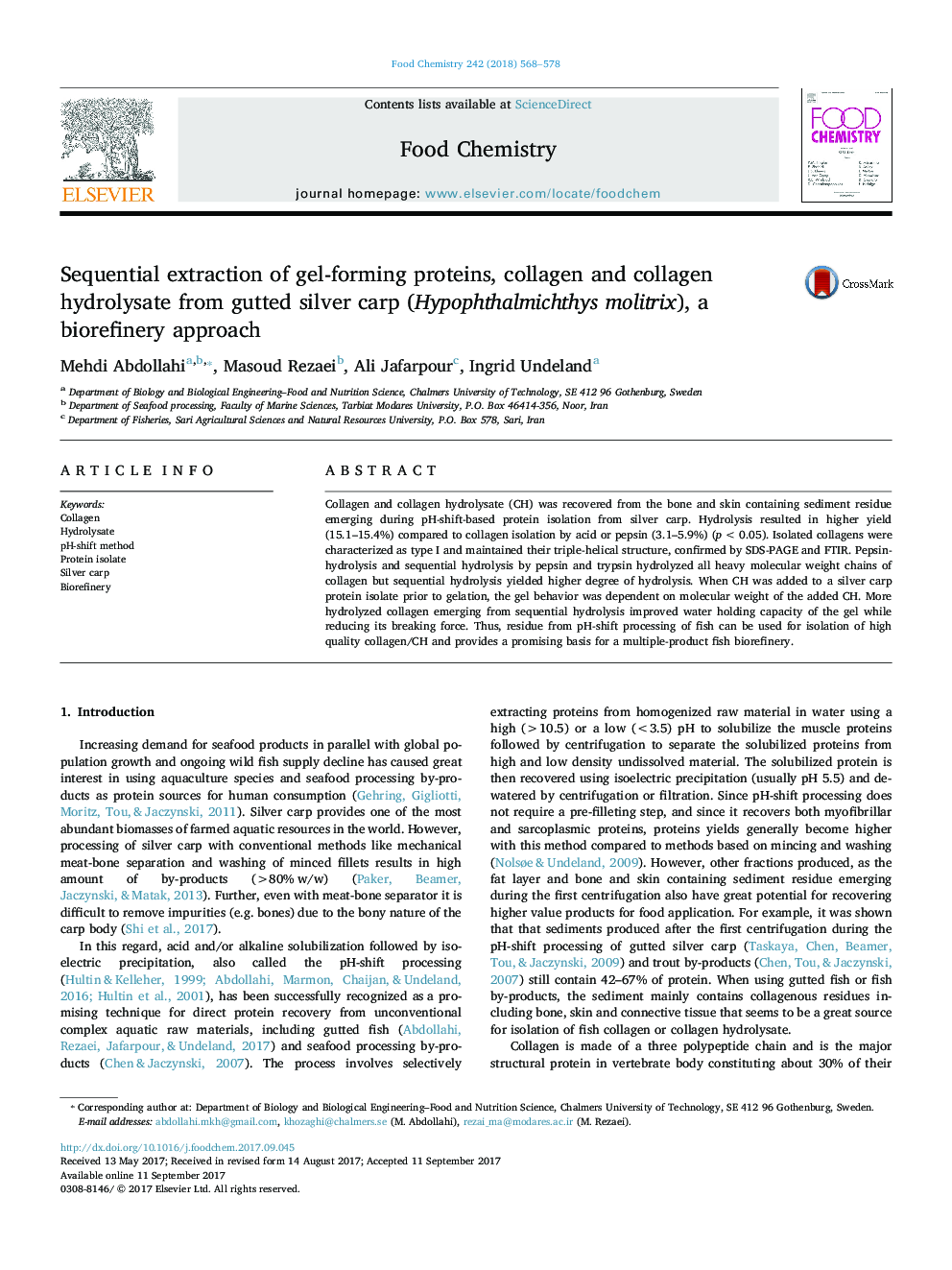| Article ID | Journal | Published Year | Pages | File Type |
|---|---|---|---|---|
| 5132640 | Food Chemistry | 2018 | 11 Pages |
â¢Collagen and its hydrolysate were produced from pH-shift residue of silver carp.â¢Hydrolysis technique resulted in higher yield compared to the acid/pepsin isolation.â¢Isolated collagens were type I and could maintain their triple helical structure.â¢Small collagen peptides improved WHC of a silver carp protein isolate-based gel.â¢Larger peptides produced with pepsin did not affect the gel properties.
Collagen and collagen hydrolysate (CH) was recovered from the bone and skin containing sediment residue emerging during pH-shift-based protein isolation from silver carp. Hydrolysis resulted in higher yield (15.1-15.4%) compared to collagen isolation by acid or pepsin (3.1-5.9%) (p < 0.05). Isolated collagens were characterized as type I and maintained their triple-helical structure, confirmed by SDS-PAGE and FTIR. Pepsin-hydrolysis and sequential hydrolysis by pepsin and trypsin hydrolyzed all heavy molecular weight chains of collagen but sequential hydrolysis yielded higher degree of hydrolysis. When CH was added to a silver carp protein isolate prior to gelation, the gel behavior was dependent on molecular weight of the added CH. More hydrolyzed collagen emerging from sequential hydrolysis improved water holding capacity of the gel while reducing its breaking force. Thus, residue from pH-shift processing of fish can be used for isolation of high quality collagen/CH and provides a promising basis for a multiple-product fish biorefinery.
